New horizons in brain medicine: From research to clinics
3rd HBP Curriculum Workshop Series - Brain medicine for non-specialists
3-5 July 2019 | Medical University Innsbruck, Austria
Click on the button below to access the workshop's media section.
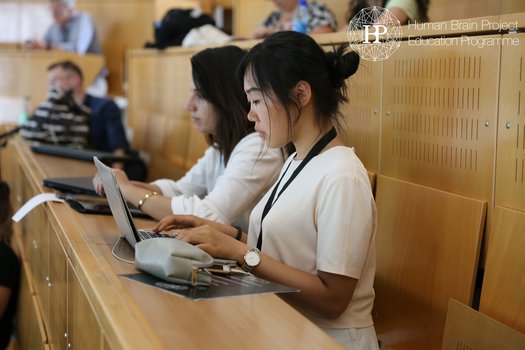
FAQs & ALL YOU NEED TO KNOW
You have to expect the following expenses:
- Registration fee (€ 250.00)
- Travel
- Accommodation
- Breakfast & dinner
What we cover:
- Lunch & coffee breaks
- Up to 5 fee waivers
Find further information on the application process and support opportunities on the general workshop site.
Innsbruck is the state capital of Tyrol, Austria and also called the capital of the Alps, where you can enjoy a unique mix of alpine urban experiences. A great range of leisure activities, cultural highlights and sports are offered year round in Innsbruck.
Innsbruck can be reached by plane (INN) from several major European hubs or by train. For information about train connections, please check Austrian Railways.
The campus can be easily reached by bus and tram:
- Bus line R – stop "Klinik/Universität"
- Bus line C – stop "Chirurgie/Studentenhaus"
- Bus line M – stop "Chirurgie/Studentenhaus"
- Tram line 3 – stop "Klinik/Universität"
- Tram line 2 – stop "Klinik/Universität"
- Tram line 5 – stop "Klinik/Universität"
We strongly recommend that you invest in travel insurance and inform yourself about treatment and reimbursement conditions before travelling to Innsbruck, Austria. If you are a European citizen, you should bring your European Health Insurance Card, which is accepted in combination with an ID.
As health care and social security systems vary between EU countries, please check the details on unforeseen medical treatment abroad.
Please note that you might have to contact your health insurer for authorisation before being treated at the hospital.
Innsbruck has continental climate. Summer is highly variable and unpredictable. Days can be cool, with temperatures as low as 17 °C (63 °F) and rainy, or sunny and extremely hot, sometimes hitting 34 °C (93 °F). In summer, as expected for an alpine-influenced climate, the diurnal temperature variation is often very high, as nights usually remain cool, at 12 °C (54 °F) on average, sometimes dipping as low as 6 °C (43 °F).
EDUROAM is available at Medical University Innsbruck.
- Language:
The official language in Austria is German. Foreign languages, particularly English, are widely understood and spoken.
- Time zone:
Innsbruck is in the Central European Time Zone (CET = GMT / UCT + 1).
- Electric current:
Electricity is supplied at 230 volts (alternating current). Type F plugs (CEE 7/4, CEE 7/7) are used.
- Tap water:
Austria is famous for it's clean water so it is definitly safe to drink it directly out of the tap.
Please note that the information provided on this site has been obtained from several different sources and therefore the organisers cannot accept any responsibility for errors therein.
The aim of this interactive workshop was to introduce and deepen the understanding of brain medicine for non-specialists with the most recent advances in research of neurodevelopmental, neurodegenerative and neuropsychiatric disorders. Lectures and tutorials by international experts reported on the state of the art of research and treatment of brain diseases. Hands-on examples and practical tools and methodologies were presented during a visit to lead laboratories at the Medical University Innsbruck. A student brainstorming session was organised to allow exchange about concepts and methods.
Application is closed.
SCIENTIFIC PROGRAMME
The scientific programme is also available as PDF download: Workshop programme - New horizons in brain medicine: From research to clinics
Wednesday 3 July 2019
Alzheimer's disease - past, present, future | 60 min
Amos Korczyn (Tel Aviv University)
The Human Brain Project at the half-way point | 60 min
Alois Saria (Medical University Innsbruck)
Gene & environment interaction in mental disorders | 60 min
Hans Grabe (University Medicine Greifswald)
Thursday 4 July 2019
The role of homocysteine in schizophrenia | 60 min
Joseph Levine (Ben Gurion University of Negev)
Modern imaging techniques in neuroimmunology: Current research and clinical applications | 60 min
Friedemann Paul (Charité Universitätsmedizin Berlin)
Christian Humpel (Medical University Innsbruck)
Lab visit | 150 min
Poster session | 60 min
Friday 5 July 2019
Protective effects of PACAP in models of neurodegenerative diseases, with special emphasis on Parkinson‘s disease | 60 min
Dora Reglodi (University of Pecs, Medical School)
Autism: From gene to drug candidate and a clinical trial plan, the case of ADNP and CP201 | 60 min
Illana Gozes (Tel Aviv University)
Insight into learning impairments and therapies for Christianson syndrome: X-linked neurological disorder | 60 min
Anne McKinney (McGill University)
Round table discussion | 30 min
CONFIRMED SPEAKERS
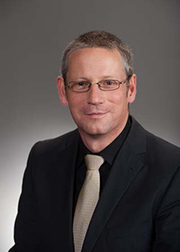 Friedemann Paul is Professor of Clinical Neuroimmunology at Charité Universitätsmedizin Berlin, Germany. He is head of the neuroimmunology outpatient clinic at the Experimental and Clinical Research Centre, a joint translational research facility run by Charité Universitätsmedizin Berlin and the Max Delbrück Centre for Molecular Medicine. He co-chairs Charité’s Clinical and Experimental Multiple Sclerosis (MS) Research Centre. His main research areas are novel imaging techniques in autoimmune disorders of the CNS (optical coherence tomography and advanced MRI including ultrahigh- field MRI), the visual system in neuroimmunological disorders, and fatigue and cognition in MS and related conditions. He has authored and co-authored more than 300 papers in the field of clinical and basic neuroimmunology.
Friedemann Paul is Professor of Clinical Neuroimmunology at Charité Universitätsmedizin Berlin, Germany. He is head of the neuroimmunology outpatient clinic at the Experimental and Clinical Research Centre, a joint translational research facility run by Charité Universitätsmedizin Berlin and the Max Delbrück Centre for Molecular Medicine. He co-chairs Charité’s Clinical and Experimental Multiple Sclerosis (MS) Research Centre. His main research areas are novel imaging techniques in autoimmune disorders of the CNS (optical coherence tomography and advanced MRI including ultrahigh- field MRI), the visual system in neuroimmunological disorders, and fatigue and cognition in MS and related conditions. He has authored and co-authored more than 300 papers in the field of clinical and basic neuroimmunology.
Lecture title: Modern imaging techniques in neuroimmunology: Current research and clinical applications
Imaging of the brain, retina and spinal cord with the help of conventional MRI as well as advanced MRI and high resolution spectral domain optical coherence tomography (OCT) has leveraged both clinical and preclinical investigations of inflammatory and neurodenegerative processes in autoimmune central nervous system disorders such as multiple sclerosis, neuromyelitis optica spectrum disorders and autoimmune encephalitides. Imaging findings have also contributed to our understanding of the temporal evolution of tissue damage and the association of CNS tissue alteration with clinical disability, namely neurological deficits and cognitive dysfunction. However, disease course prediction and correlation of imaging findings with the clinical status in individual patients are still unsatisfactory (“clinico-radiological paradox”), underscoring the need for more sensitive and clinically relevant imaging biomarkers for patients with autoimmune CNS inflammation. This presentation will review both preclinical data and clinical applications of conventional and advanced imaging techniques and will discuss future research questions, in particular with regard to new developments helping to improve individual disease course prediction and therapeutic monitoring.
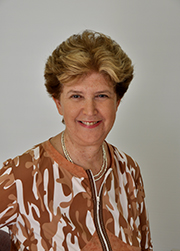 Illana Gozes is the Editor-in Chief of the Journal of Molecular Neuroscience. She heads the Tel Aviv Chapter of the Society for Neuroscience, is an Associate Editor on the Journal of Alzheimer's Disease and member of the Editorial Advisory Panel and Editorial Board of Scientific Reports (Nature), an Ex-President of the Israel Society for Neuroscience (ISFN) and Past Director of the Adams Super Center for Brain Studies. She was the Founding Scientist and a Director at Allon Therapeutics Inc., Vancouver, Canada and is currently the Chief Scientific Officer of Coronis Neurosciences. Professor Gozes (BSc, TAU, PhD, Weizmann Institute of Science, postdoctoral fellow at Massachusetts Institute of Technology (MIT), research associate/visiting scientist, Salk Institute and the Scripps Clinic and Research Foundation) was a Senior Scientist/Associate Professor at the Weizmann Institute and a Fogarty Scholar – in – Residence at the National Institutes of Health (NIH, USA). Prof. Gozes has published ~300 papers, in the fields of neuroscience and is cited >12750 times. Professor Gozes received many prizes (including the Teva award, the Landau Prize and the Humboldt Award) for her pioneering work on nervous system function, from genes to behavior and drug development. Some of her propriety inventions are in clinical development.
Illana Gozes is the Editor-in Chief of the Journal of Molecular Neuroscience. She heads the Tel Aviv Chapter of the Society for Neuroscience, is an Associate Editor on the Journal of Alzheimer's Disease and member of the Editorial Advisory Panel and Editorial Board of Scientific Reports (Nature), an Ex-President of the Israel Society for Neuroscience (ISFN) and Past Director of the Adams Super Center for Brain Studies. She was the Founding Scientist and a Director at Allon Therapeutics Inc., Vancouver, Canada and is currently the Chief Scientific Officer of Coronis Neurosciences. Professor Gozes (BSc, TAU, PhD, Weizmann Institute of Science, postdoctoral fellow at Massachusetts Institute of Technology (MIT), research associate/visiting scientist, Salk Institute and the Scripps Clinic and Research Foundation) was a Senior Scientist/Associate Professor at the Weizmann Institute and a Fogarty Scholar – in – Residence at the National Institutes of Health (NIH, USA). Prof. Gozes has published ~300 papers, in the fields of neuroscience and is cited >12750 times. Professor Gozes received many prizes (including the Teva award, the Landau Prize and the Humboldt Award) for her pioneering work on nervous system function, from genes to behavior and drug development. Some of her propriety inventions are in clinical development.
Lecture title: Welcome note and workshop introduction
Lecture title: Autism: From gene to drug candidate and a clinical trial plan, the case of ADNP and CP201
Three decades ago, we cloned vasoactive intestinal peptide (VIP), which led to the identification of VIP's involvement in synapse formation and neuroprotection through our discoveries of activity-dependent neurotrophic factor (ADNF) and activity-dependent neuroprotective protein (ADNP). We then showed that manipulating VIP content impacts cognition in the mouse. Importantly, complete knockout of ADNP results in embryonic death at the time of brain formation. Adnp heterozygous mice survive showing cognitive and social deficiencies, with pathologies resembling autism and Alzheimer's disease. ADNP interacts with key regulatory proteins and key genes regulating > 400 genes during embryonic development and thousands of genes postnatally, with age and sex differences. Importantly, ADNP was recently identified as one of the major genes mutated de novo (possibly during pregnancy), leading to autism. Furthermore, blood borne ADNP levels correlate with IQ tests in elderly individuals. To try to combat ADNP deficiencies, we have designed and synthesized an ADNP – derived peptide, drug candidate, NAP, also known as davunetide, CP201. NAP directly interacts with microtubules (forming the nerve cell skeleton and transport system, to induce the formation of brain cell connections (synaptic plasticity). NAP enhances ADNP activity. In animals, NAP provided protection against neuronal toxicities and genetic manipulations associated with autism, schizophrenia and Alzheimer's disease. Based on the NAP binding site, a novel drug candidate was developed namely SKIP, protecting cognition1. NAP2 has shown clinical efficacy and together with SKIP, both compounds are poised to further clinical development (http://www.coronisns.com/)
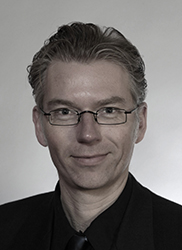 Hans Joergen Grabe, UMG, is head of the Department of Psychiatry and Psychotherapy at the University Medicine Greifswald, Germany.
Hans Joergen Grabe, UMG, is head of the Department of Psychiatry and Psychotherapy at the University Medicine Greifswald, Germany.
In the first part of his career (1994-2002) he was mainly involved in family studies of obsessive-compulsive disorder, studies on personality traits, emotion-regulation. Since 1998, he became increasingly active in the field of genetic epidemiology and became the leading researcher of genetic epidemiology at Greifswald University and contributed actively to the epidemiological cohort “Study of Health in Pomerania” (SHIP). He has been funded for his family-based research in OCD, gene-environment interaction in depression, for genome-wide association studies, for a longitudinal family study on substance abuse and for research in the field of individualized medicine (GANI_MED). Since 2010 he is member of the German Center for Neurodegenerative Disorders (DZNE). Since 2008 he has been active in international consortia like Neuro- CHARGE, Psychiatric Genomics Consortium (PGC) and ENIGMA for genomic research and brain imaging. He has established a research group for multi-OMICS analyses in psychiatric and brain diseases. He is advisor of the FinnBrain study at Turku University, Finland. Prof. Grabe has published ~270 papers, in the fields of psychiatry and cited >7000 times.
Lecture title: Gene & environment interaction in mental disorders
The vulnerability-stress-model has gained much attention in mental disorders as it nicely captures the multifactorial nature of the disorders. During the last years, research activities aimed to identify biological and genetic components that operate in interaction with psychosocial factors like stressful life-events and urbanicity within this model increasing or lowering ones vulnerability for mental disorders. In my talk I will highlight new findings of environmental and genetic risk factors in depressive and bipolar disorders and schizophrenia extending this focus to epigenetic mechanisms. Especially genes from the HPA-axis (e.g. FKBP5) and the monoaminergic systems like the serontonin transporter gene polymorphism (5-HTTLPR) will be presented. Moreover I will present recent studies that map the interaction of environment and genes (GxE) on the brain structure. Finally, I will give some insights into the statistical approaches of GxE especially when extending this approach to genome-wide data sets.
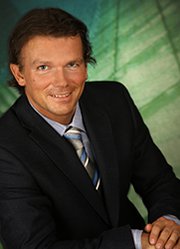 Prof. Johannes Haybaeck, MD, PhD is Full Professor of Pathology and Chair at the Department of Pathology, Neuropathology and Molecular Pathology of the Medical University of Innsbruck, Austria and Chair at the Department of Pathology of the Medical Faculty of the Otto von Guericke University of Magdeburg, Germany. He is board certified Pathologist, Neuropathologist, also trained in Molecular Biologist. He is also working at the Institute of Pathology, Medical University of Graz, Austria. In 2011 he became Vice Chair and in 2014 he became Chair of the Department of Neuropathology of the Institute of Pathology, Medical University of Graz, Austria. He was elected for two periods as Founding Coordinator for Cancer Research, Education and Training of the Comprehensive Cancer Center (CCC) Graz. Since 2016 he is Full Professor and Chair of the Department of Pathology of the Medical Faculty of the Otto von Guericke University Magdeburg, Germany. In addition, since 2018 he is Full Professor and Chair of the Department of Pathology, Neuropathology and Molecular Pathology of the Medical University of Innsbruck, Austria. Being confronted with daily diagnostic questions as Surgical Pathologist and Neuropathologist his main research interest is the understanding of the cellular and molecular mechanisms driving diseases predominantly carcinogenesis. Since many years he is intensively involved in Biobanking, giving advice and helping in establishing biobanks.
Prof. Johannes Haybaeck, MD, PhD is Full Professor of Pathology and Chair at the Department of Pathology, Neuropathology and Molecular Pathology of the Medical University of Innsbruck, Austria and Chair at the Department of Pathology of the Medical Faculty of the Otto von Guericke University of Magdeburg, Germany. He is board certified Pathologist, Neuropathologist, also trained in Molecular Biologist. He is also working at the Institute of Pathology, Medical University of Graz, Austria. In 2011 he became Vice Chair and in 2014 he became Chair of the Department of Neuropathology of the Institute of Pathology, Medical University of Graz, Austria. He was elected for two periods as Founding Coordinator for Cancer Research, Education and Training of the Comprehensive Cancer Center (CCC) Graz. Since 2016 he is Full Professor and Chair of the Department of Pathology of the Medical Faculty of the Otto von Guericke University Magdeburg, Germany. In addition, since 2018 he is Full Professor and Chair of the Department of Pathology, Neuropathology and Molecular Pathology of the Medical University of Innsbruck, Austria. Being confronted with daily diagnostic questions as Surgical Pathologist and Neuropathologist his main research interest is the understanding of the cellular and molecular mechanisms driving diseases predominantly carcinogenesis. Since many years he is intensively involved in Biobanking, giving advice and helping in establishing biobanks.
Lecture title: Brain banking and research approaches in human brain tissue and neuropathology
Brain banking is a hot topic since many years as many scientists all over the world have much hope to gain novel insights by investigating brain tissue with a variety of different methods. Brain banks promote the development of novel biomarkers for diagnosis of diseases and allow to monitor the development and effects of novel therapeutics. Tissue sampling of human brains for biobanking in combination with quantitative imaging methods such as Computed Tomography (CT) or Magnetic Resonance Imaging (MRI) and quantitative biochemical analysis will open a new possibilities for brain research. Novel and more detailed insight in brain structure and function can be gained by combining imaging information with data generated by analyzing brain tissue with a variety of neuroscientific methods. Newly developed imaging can only be validated by performing post mortem studies.
A promising approach to combined imaging with brain banking would be to first image the whole unfixed brain, to avoid fixation induced artefacts, using various quantitative MRI techniques. Thereafter, brain samples from defined regions will be extracted out of one hemisphere and the other hemisphere will be fixed using formalin and stored for further analysis. The unfixed and frozen brain tissue can be used for elementary analysis using mass spectrometry, to determine the magnetic properties using SQUID magnetometry, for tissue clearing and fluorescent microscopy of 3D volumes. The stored formalin fixed brain tissue can be used for histology and immunohistochemistry analysis. By combining imaging with subsequent analysis of brain tissue, novel biomarkers can be developed and novel insights gained in structure and function of brain tissue.
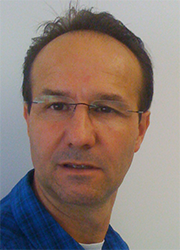 Dr. Christian Humpel is appointed Univ. Professor of Experimental Psychiatry at the Medical University Innsbruck, Austria. He is an expert on Alzheimer´s disease and focuses on the role of the vascular system and of blood cells (esp. platelets) on plaque development. He has also more than 20 years of experience using organotypic brain slices, where the elimination of plaques is studied. He further is keen to find new biomarkers in cerebrospinal fluid and blood to diagnose dementia. He has published more than 210 peer-reviewed papers.
Dr. Christian Humpel is appointed Univ. Professor of Experimental Psychiatry at the Medical University Innsbruck, Austria. He is an expert on Alzheimer´s disease and focuses on the role of the vascular system and of blood cells (esp. platelets) on plaque development. He has also more than 20 years of experience using organotypic brain slices, where the elimination of plaques is studied. He further is keen to find new biomarkers in cerebrospinal fluid and blood to diagnose dementia. He has published more than 210 peer-reviewed papers.
Title lecture: Biomarkers of Alzheimer's disease
Alzheimer´s disease (AD) is a severe neurodegenerative brain disorder and as age is the main risk factor for AD the number of patients suffering from AD will dramatically increase within the next 50 years. These enormously high numbers of presumed AD patients call for further establishment of reliable diagnostic surrogate markers for diagnosing and monitoring disease and therapy progression. A promising area of research for laboratory diagnosis of AD is the analysis of cerebrospinal fluid (CSF) biomarkers, however, this is limited by invasive collection. Alternatively, research aims to find biomarkers in other human liquids, such as blood or saliva. In the present lecture I will discuss the problem of "biomarkers in AD".
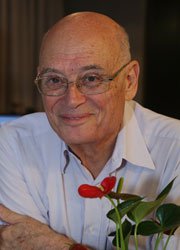 Amos Korczyn graduated from the Hebrew University–Hadassah Medical School in Jerusalem in 1966 (MD), where he also received an MSc degree in pharmacology (cum laude) in 1966. He trained in neurology at Beilinson Hospital and at the National Hospital for Nervous Diseases, Queen Square, London. He was the Chairman of the Department of Neurology at the Tel-Aviv Medical Center from 1981 until 2002, and the incumbent of the Sieratzki Chair of Neurology at Tel-Aviv University, 1995-2010. Professor Korczyn has a particular interest in neurodegenerative diseases. He has authored or co-authored over 600 articles in peer-reviewed journals, as well as many chapters in books. He edited several books and Special Issues in Journals, and is Regional Editor of the Journal of Alzheimer's Disease. He is or has been an Editorial Board member of 20 international journals, and organized several neurological conferences, mainly in the field of dementia, Parkinson’s disease and other degenerative brain disorders, as well as CONy – the International Congress on Controversies in Neurology, and has organized the Mental Dysfunction in Parkinson's disease congresses since 1993. Professor Korczyn served on advisory boards in several drug discovery programs. Professor Korczyn is the Chairman of the Scientific Medical Board of the Israeli Alzheimer's disease association (EMDA), member of the SAB of Alzheimer Disease International (ADI), and has been the chairman of the WFN Research Committee for Clinical Neuropharmacology. Professor Korczyn is an honorary member of the neurological societies of Israel, Serbia, Poland, Russia, and Romania. Professor Korczyn’s H-index is 73.
Amos Korczyn graduated from the Hebrew University–Hadassah Medical School in Jerusalem in 1966 (MD), where he also received an MSc degree in pharmacology (cum laude) in 1966. He trained in neurology at Beilinson Hospital and at the National Hospital for Nervous Diseases, Queen Square, London. He was the Chairman of the Department of Neurology at the Tel-Aviv Medical Center from 1981 until 2002, and the incumbent of the Sieratzki Chair of Neurology at Tel-Aviv University, 1995-2010. Professor Korczyn has a particular interest in neurodegenerative diseases. He has authored or co-authored over 600 articles in peer-reviewed journals, as well as many chapters in books. He edited several books and Special Issues in Journals, and is Regional Editor of the Journal of Alzheimer's Disease. He is or has been an Editorial Board member of 20 international journals, and organized several neurological conferences, mainly in the field of dementia, Parkinson’s disease and other degenerative brain disorders, as well as CONy – the International Congress on Controversies in Neurology, and has organized the Mental Dysfunction in Parkinson's disease congresses since 1993. Professor Korczyn served on advisory boards in several drug discovery programs. Professor Korczyn is the Chairman of the Scientific Medical Board of the Israeli Alzheimer's disease association (EMDA), member of the SAB of Alzheimer Disease International (ADI), and has been the chairman of the WFN Research Committee for Clinical Neuropharmacology. Professor Korczyn is an honorary member of the neurological societies of Israel, Serbia, Poland, Russia, and Romania. Professor Korczyn’s H-index is 73.
Lecture Talk: Alzheimer's disease - past, present, future
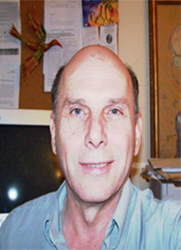 Joseph Levine is a Specialist in Psychiatry with more than 35 years of experience in Psychiatry. Prof. Levine is a former Director of the adult and forensic Psychiatric Wards and Outpatient Clinic in Israel. He is currently a Director of the Psychogeriatric division (Wards and Outpatient Clinic) at the Beersheva Mental Health Center, Isreal. Prof. Levine has a Doctor of Medicine degree from the Sackler School of Medicine, University of Tel Aviv (Isreal, 1982), and his M.A. Sci. (cum laude) degree in Physiology and Pharmacology from the University of Tel Aviv (1985). He is also an Examiner for Specialization in Psychiatry on behalf of the Scientific Council of Israel. He had received 3 years of training in psychotherapy and another 2 years of training in family therapy, from the Sackler School of Medicine, Tel Aviv University. He also has a diploma in Hypnosis form the Israeli Ministry of Health. Between the years 1997 and 2000, Prof. Levine was undergoing 3 years of research in the bipolar unit and the Neurophysics Laboratory of the psychiatric department of the University of Pittsburgh, U.S.A. Since 2002, Prof. Levine is an Associate Professor in the Psychiatric Division of the Faculty of Health Sciences at Ben Gurion University of the Negev. Since 1987, Prof. Levine has published more than 150 scientific manuscripts and book chapters in the international scientific literature. In collaboration with Prof. RH Belmaker, Prof. S Gershon, Prof. KN Chengappa, and Prof. JW Pettegrew, Prof. Levine has explored the efficacy of a variety of innovative therapeutic drug treatments in psychiatric disorders, including Anxiety Disorders, Depression, Eating Disorders, Bipolar illness and Schizophrenia. Such treatments included Myo-Inositol, Acetylcarnitine and Creatine, among others. In recent years, he is also exploring the role of Homocysteine as a risk factor in Schizophrenia (together with RH Belmaker), PTSD, and Eating Disorders.
Joseph Levine is a Specialist in Psychiatry with more than 35 years of experience in Psychiatry. Prof. Levine is a former Director of the adult and forensic Psychiatric Wards and Outpatient Clinic in Israel. He is currently a Director of the Psychogeriatric division (Wards and Outpatient Clinic) at the Beersheva Mental Health Center, Isreal. Prof. Levine has a Doctor of Medicine degree from the Sackler School of Medicine, University of Tel Aviv (Isreal, 1982), and his M.A. Sci. (cum laude) degree in Physiology and Pharmacology from the University of Tel Aviv (1985). He is also an Examiner for Specialization in Psychiatry on behalf of the Scientific Council of Israel. He had received 3 years of training in psychotherapy and another 2 years of training in family therapy, from the Sackler School of Medicine, Tel Aviv University. He also has a diploma in Hypnosis form the Israeli Ministry of Health. Between the years 1997 and 2000, Prof. Levine was undergoing 3 years of research in the bipolar unit and the Neurophysics Laboratory of the psychiatric department of the University of Pittsburgh, U.S.A. Since 2002, Prof. Levine is an Associate Professor in the Psychiatric Division of the Faculty of Health Sciences at Ben Gurion University of the Negev. Since 1987, Prof. Levine has published more than 150 scientific manuscripts and book chapters in the international scientific literature. In collaboration with Prof. RH Belmaker, Prof. S Gershon, Prof. KN Chengappa, and Prof. JW Pettegrew, Prof. Levine has explored the efficacy of a variety of innovative therapeutic drug treatments in psychiatric disorders, including Anxiety Disorders, Depression, Eating Disorders, Bipolar illness and Schizophrenia. Such treatments included Myo-Inositol, Acetylcarnitine and Creatine, among others. In recent years, he is also exploring the role of Homocysteine as a risk factor in Schizophrenia (together with RH Belmaker), PTSD, and Eating Disorders.
Lecture title: The role of homocysteine in schizophrenia
Schizophrenia is a devastating disorder, that may carry grave consequences. Its etiology is still unknown and although pharmacological treatment does exist, many patients with this disorder show only partial response. Several studies of our group have reported that homocysteine levels are elevated in schizophrenic patients, especially in males (Levine et al, 2002, Appelbaum et a, 2004). Other groups also reported similar findings. In a following study we showed that such increased levels also characterize male siblings of schizophrenia patients (Geller et al,2013). It may thus be suggested that high homocysteine levels consist a risk factor for schizophrenia and a Meta-analysis conducted by Muntjewerff et al. (2006) suggested that a 5 micromol/l increase in homocysteine is associated with a 70% higher risk for schizophrenia. Homocysteine levels can be lowered by oral folic acid, B-12, and pyridoxine. In a treatment study our group (Levine et al, 2006) Forty-two schizophrenic patients with plasma homocysteine levels >15 micromol/L were treated with these vitamins for 3 months and placebo for 3 months. The study was randomized, double-blind, placebo-controlled, crossover design. Homocysteine levels declined with vitamin therapy compared with placebo in all patients except for one noncompliant subject. Clinical symptoms of schizophrenia as measured by the Positive and Negative Syndrome Scale declined significantly with active treatment compared with placebo. Neuropsychological test results overall, and Wisconsin Card Sorting test results in particular, were significantly better after vitamin treatment than after placebo. We concluded that a subgroup of schizophrenic patients with hyperhomocysteinemia may benefit from the addition of B vitamins. Folate plus vitamin B12 Supplementation in schizophrenia (Roffman et al, 2013) improved negative symptoms of schizophrenia (influenced by genetic variation in folate absorption). Roffman et al, 2017 also showed that l-methylfolate supplementation was associated with beneficial physiological changes and selective symptomatic improvement in patients with schizophrenia.
Mira Marcus-Kalish is currently the Director of International Research Collaborations at the Tel Aviv University. Her main areas of interest are mathematical modelling, converging technologies, data mining and data analysis. Dr Kalish holds a Ph.D. in Operations Research from the Technion - Israeli Institute of Technology, where she developed one of the first computerized systems for electrocardiogram (ECG) diagnosis. She did her postdoctoral training at Harvard University, the MBCRR (Molecular Biology Computer Research and Resource) laboratory and at the Dana Farber Cancer Institute. Her B.Sc. is in Statistics and Biology from the Hebrew University of Jerusalem. Upon her return to Israel, she joined the Tel Aviv University Business School establishing the Medical Management Program focusing on Medical Informatics. Then, worked with Prof Ephraim Katzir, the Weizmann Institute, mainly on protein interactions, specificity & sensitivity and converging technologies. She served as the scientific advisor and the head of the Enterprise Marketing Department of IBM Israel. Dr. Kalish took an active part in many of the EU framework projects including HBP, Focusing on knowledge & data analysis towards brain disease signature definition, personalized medicine, small versus big data analysis, rehabilitation of the discrete sensory motor, cerebellar motor learning, drug toxicity analysis, etc.
Lecture title: Big vs Small Data Analysis Targeting “Disease Signatures” Towards Precision Healthcare
The target is a comprehensive definition of “Disease Signature” that relates to all relevant micro and macro environmental features of the human body functioning in his surroundings. It might include parameters such as: age, gender, clinical tests, biological markers, medical history, genetics, imaging, lifestyle, physical, sociological and cultural environment, etc. New technologies have greatly enhanced our profound insights on the human body functioning, enabling the integration of knowledge and data from different domains originating in different sources, demands bridging of conceptual and technical barriers such as missing values, and the lack of consistency in the final diagnosis. Privacy and security of all data and knowledge has to be ensured through all procedures while tackling data base leakage (Eloyan et al (2012), Brown et al (2012) - combining Big Data related to a few number of people – defined as "Small Data", replicability (Baggerly & Coombes-2011, Rosenblatt, Vink & YB-2013), reproducibility, etc. Additional challenges are the growing sensitivity and specificity needs in representing the medical data variance and its relevance and contribution to personalized and precise medicine. A 3C- Categorization, Classification & Clustering- strategy, aims to provide a comprehensive insight through a stepwise process, incorporating medical expert knowledge in a structured way into the analysis process of the disease manifestations and potential biomarkers, towards reliable precise medicine. The 3C strategy, was developed in our lab, as part of the Medical Informatics efforts in the EU Human Brain Flagship Project. Three case studies utilizing the 3C strategy, will be presented. A Parkinson’s disease cohort of diagnosed patients and their family members yielding new genotypes associations, the Alzheimer's disease Neuroimaging Initiative (ADNI) cohort going beyond the discovery of association to new sub-type identification that were verified with hospital data and PTSD research on the Tel Aviv Sorasky Medical Center data.

Anne McKinney is the Associate Dean in Medicine (Academic Affairs) McGill University and Chair the Brain@McGill program, with the mandate to enhance McGill’s performance and positioning in the neurosciences. Dr. McKinney completed her B.Sc. (Hons) in Medical Laboratory Sciences in 1988 and D.Phil in 1992 at the University of Ulster in Northern Ireland. She then took a position as Postdoctoral Research Fellow at the Brain Research Institute, University of Zurich, Switzerland where she was subsequently appointed in 1998 as an Assistant Professor in the Department of Neurophysiology. In 2005 she joined the Department of Pharmacology and Therapeutics at McGill’s Faculty of Medicine as Associate Professor and where she is now a Full Professor. From January 2016 to December 2018, Dr. McKinney served as Associate Vice-Principal of Research and Innovation (Health Affairs). Her mandate in this role was to support the overall mission of advancing biomedical and health sciences research excellence at McGill while increasing research performance and research intensity. Dr. McKinney’s own research focuses on deciphering the molecular basis of synapses, whose development and maintenance in the central nervous system remain a poorly understood area of neuroscience. Based in the Bellini Building in the Life Sciences Complex, her lab uses cutting-edge imaging techniques to reveal the processes of synaptic stability and neuronal circuitry with the aim of developing therapies for autism, epilepsy and neurodegenerative diseases. She has published her research in leading international peer-reviewed journals. Her research has been funded by CIHR, NSERC, ARSACS Foundation and the Alzheimer’s Society of Canada. Dr. McKinney acts as a frequent reviewer for several organizations including NSERC, CIHR, Swiss National Science Foundation, Agence Nationale de la Recherche France, Israel Science Foundation and the UK Medical Research Council. Dr. McKinney also serves as a member of the National Research Council Canada’s Medical Devices Research Centre Advisory Board, as well as being an external advisory board member for University of Texas at Austin NSF grant NeuroNex technology hubs. She has received many accolades throughout her career.
Title lecture: Insight into learning impairmente and therapies for Christianson syndrome: X-linked neurological disorder
Neurodevelopmental disorders comprise a heterogeneous group of conditions that result from altered early brain development. Christianson Syndrome (CS) is one such neurodevelopmental disorder that presents with intellectual disability (ID), epilepsy, ataxia, autistic behaviour, and progressive neurodegeneration. It is possibly one of the more common forms of X-linked ID, but little is known of its underlying etiology. CS arises from mutations in the SLC9A6 gene encoding for sodium/proton exchanger isoform 6 (NHE6). NHE6 primarily localizes to the membranes of early and recycling endosomes, intracellular vesicles that function in receptor processing, cargo sorting, and membrane protein recycling, and functions to alkalinize the internal pH of these structures, which must be tightly regulated to allow their proper function. If they become overacidified, this may result in their cargo being trafficked towards lysosomes, acidic compartments involved in protein degradation. I will present our recent findings showing how lack of functioning NHE6 can lead to mistrafficking of certain cargo and learning deficits. Therapeutic intervention to rescue the learning deficits using by repurposing drugs will be discussed.
 Dora Reglodi, Hungarian medical researcher, educator. Achievements include research in the neuroprotective effects of PACAP. Scholar, Hungarian Academy of Sciences, since 2002. She currently works at the Institute of Anatomy, University of Pécs. Dora does research in Endocrinology, Physiology and Neuroscience. Their current project is 'Animal models of major depressive disorder'.
Dora Reglodi, Hungarian medical researcher, educator. Achievements include research in the neuroprotective effects of PACAP. Scholar, Hungarian Academy of Sciences, since 2002. She currently works at the Institute of Anatomy, University of Pécs. Dora does research in Endocrinology, Physiology and Neuroscience. Their current project is 'Animal models of major depressive disorder'.
Lecture title: Protective effects of PACAP in models of neurodegenerative diseases, with special emphasis of Parkinson‘s disease
Pituitary adenylate cyclase-activating polypeptide (PACAP) has neuroptorective effects in different neuronal injuries. We have shown the neuroprotective effect of PACAP in a rat model of Parkinson’s disease, reducing motor deficits and dopaminergic cell loss after unilateral 6-OHDA lesion of the substantia nigra. We examined detailed mechanisms of this protective effect using different animal models of Parkinson’s disease. We examined changes in monoamine metabolic enzyme (S-COMT, MB-COMT and MAO-B) and PARK7 protein concentrations after PACAP treatment in unilateral 6-OHDA lesion of the substantia nigra in rats. PACAP treatment increased DA and PARK7 protein levels and decreased MB-COMT concentration in the substantia nigra both in young and aging rats, but it had no effect on serotonin, S-COMT and MAO-B levels. We examined the effect of PACAP treatment in rotenone-induced Parkinson’s model in snails. PACAP improved behavioral deficits, increased DA and decreased MB-COMT levels, but in snails, it had no effect on serotonin, S-COMT and PARK7 levels. PACAP deficient (KO) mice have higher vulnerability in several pathological conditions. We analyzed the morphological and molecular alterations of the brain between wild type and PACAP KO mice. With SDS-PAGE, mass spectrometric-based proteomic analysis and volume imaging techniques we found several differences in the diencephalon and mesencephalon leading to altered biochemical processes in mice lacking endogenous PACAP. PACAP KO animals showed more severe behavioral alterations and dopaminergic cell loss after unilateral 6-OHDA lesion of the substantia nigra compared to wild animals. These results provided evidence for the protective effect of endogenous PACAP in this Parkinson’s disease model. We also evaluated the changes in Pac1 receptor expression in basal ganglia related to Parkinson’s disease in MPTP-induced macaque model. Striatum, pallidum and cortex were evaluated for Pac1R immunostaining. We found downregulation of PACAP receptor, suggesting an important role in the development/progression of the disease.
 Alois Saria started his research career investigating functions of neuropeptides in the autonomic and central nervous system and then moved to work on neuropeptides in the central nervous system and mechanism of action of psychoactive drugs and narcotics. More recently his research focused on systems neurobiology, particularly reward systems, and pharmacokinetic and -dynamic aspects of antidepressants and antipsychotics relevant for therapeutic drug monitoring in psychiatry. Techniques applied include behavioural animal models in psychiatry, most recently for addictive behaviour, immunohistochemistry, in-situ hybridization, in-vivo microdialysis, cell and tissue culture, quantitative determination of signaling substances with immunoassays and LC-tandem-mass spectrometry. In the current SPIN projects multielectrode-array recordings and optogenetic methods are in the process of being established.
Alois Saria started his research career investigating functions of neuropeptides in the autonomic and central nervous system and then moved to work on neuropeptides in the central nervous system and mechanism of action of psychoactive drugs and narcotics. More recently his research focused on systems neurobiology, particularly reward systems, and pharmacokinetic and -dynamic aspects of antidepressants and antipsychotics relevant for therapeutic drug monitoring in psychiatry. Techniques applied include behavioural animal models in psychiatry, most recently for addictive behaviour, immunohistochemistry, in-situ hybridization, in-vivo microdialysis, cell and tissue culture, quantitative determination of signaling substances with immunoassays and LC-tandem-mass spectrometry. In the current SPIN projects multielectrode-array recordings and optogenetic methods are in the process of being established.
Lecture title: The Human Brain Project at the half-way point
The Human Brain Project is one of the Flagship Projects funded by the European Union for a period of ten years. The project started in October 2013 and has now reached the half-way point. The core project currently involves 131 partners from 19 European countries and 7 partnering projects. The mission of the project is to explore the multi-level complexity of the brain in space and time and to transfer the acquired knowledge to brain-derived applications in medicine, computing and technology. At the moment, 6 ICT-platforms have been established where consortium members, in collaboration with other scientists, carry out experiments that already lead to a number of success stories with impact on creating more detailed digital brain atlases, treatment of brain diseases, development of electronic devices or building a brain-like, so-called “neuromorphic” computer architecture. For the remaining funding periods the focus will be on building a sustainable infrastructure which can be accessed by researchers from anywhere for novel experimental approaches to brain research using most advanced high-performance and brain-inspired computer technologies.
SCIENTIFIC CHAIR
Illana Gozes | TAU


ORGANISERS
Sylvia Aßlaber | MUI
Laura Saxer | MUI
This face-to-face workshop is based on the content of the HBP Curriculum online lectures.
ABOUT THE VENUE
MEDICAL UNIVERSITY INNSBRUCK
Medizinzentrum Anichstraße
6020 Innsbruck
Austria
The Medical University of Innsbruck is a young research centre with a long tradition: It was one of the first four faculties (Philosophy 1669, Faculty of Law 1670, Faculty of Theology 1670 and Faculty of Medicine 1674) of the University of Innsbruck and has been an important flagship for the university throughout its 350-year history.
In the heart of Tyrol, Austria and consequently in the heart of the Alps, the Medical University of Innsbruck provides the best conditions for successful research, studies and teaching at an attractive location. It is the most important medical research and training facility in western Austria.







